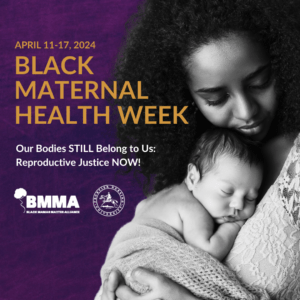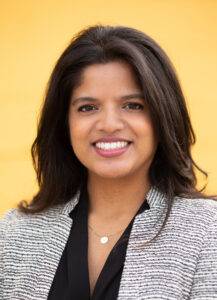 Frontier Nursing University (FNU) has announced Eva Fried, DNP, CNM, WHNP, as the Clinical Director of Midwifery and Women’s Health. Dr. Fried earned her bachelor’s degree in Women’s Studies from The Ohio State University and went on to complete a Women’s Health Nurse Nurse Practitioner program at Ohio State, earning a Master of Science degree. She earned a Doctor of Nursing Practice from Wright State University and a post-graduate certificate in nurse-midwifery from FNU. Her distinguished career as an educator includes positions as an adjunct professor and clinical faculty advisor at Georgetown University, an assistant professor at Otterbein University, and associate professor and nurse-midwifery program director at the University of Cincinnati.
Frontier Nursing University (FNU) has announced Eva Fried, DNP, CNM, WHNP, as the Clinical Director of Midwifery and Women’s Health. Dr. Fried earned her bachelor’s degree in Women’s Studies from The Ohio State University and went on to complete a Women’s Health Nurse Nurse Practitioner program at Ohio State, earning a Master of Science degree. She earned a Doctor of Nursing Practice from Wright State University and a post-graduate certificate in nurse-midwifery from FNU. Her distinguished career as an educator includes positions as an adjunct professor and clinical faculty advisor at Georgetown University, an assistant professor at Otterbein University, and associate professor and nurse-midwifery program director at the University of Cincinnati.
“We are extremely excited to announce Dr. Fried as our new Clinical Director of Midwifery and Women’s Health,” said FNU Dean of Nursing Dr. Joan Slager, CNM, DNP, FACNM, FAAN. “Her experience and expertise as both an educator and practitioner provide a tremendous resource for our students and the university as a whole.”
Dr. Fried’s clinical experience began as a certified professional midwife in 1993. She then worked as a women’s health nurse practitioner at the Columbus Neighborhood Health Centers and then Professionals for Women’s Health, both in Columbus, Ohio. In this role, she provided comprehensive care, including gynecology and pregnancy care. She is currently a certified nurse-midwife and women’s health nurse practitioner at University Hospitals health system in Cleveland and Ashland, Ohio.
“Dr. Fried has a long history of care as a certified nurse-midwife and as a nurse practitioner,” said FNU Department Chair for the Department of Midwifery and Women’s Health Dr. Eileen Thrower, Ph.D., APRN, CNM, CNE, FACNM. “Her clinical and academic experience combined with her passion for educating our students makes her a great fit as our Clinical Director of Midwifery and Women’s Health.”
Dr. Fried’s many awards and accomplishments include the American College of Nurse-Midwives Excellence in Teaching Award in 2020 and 2021. She was named the Clinical Faculty Advisor of the Year at Georgetown University in 2018 and won the Faculty Scholar Development Award for Summer Writing at Otterbein University in 2017.
Dr. Fried’s service to the profession includes chairing the Publications Committee of The American College of Nurse-Midwives and serving as the Treasurer and Chair-elect of the Accreditation Commission for Midwifery Education (ACME). Her areas of scholarly interest include anti-racism in midwifery education and LGBTQIA+ welcoming healthcare environments with an umbrella interest in belongingness in both educational and healthcare environments.
“I find partnering with patients in their health care to be tremendously satisfying, and I enjoy preparing students to do the same,” Dr. Fried said. “I strongly believe in the mission of Frontier Nursing University and am honored to be part of a university that is committed to preparing excellent nursing professionals.”
Eva and her wife Amy are the parents of six adult children and currently make their home between Columbus, Ohio, and Charlotte, North Carolina.



 National Midwifery Week
National Midwifery Week Last month,
Last month, 











 Dr. Tia Brown McNair is the Vice President in the Office of Diversity, Equity, and Student Success and Executive Director for the Truth, Racial Healing, and Transformation (TRHT) Campus Centers at the American Association of Colleges and Universities (AAC&U) in Washington, DC. She oversees both funded projects and AAC&U’s continuing programs on equity, inclusive excellence, high-impact practices, and student success. McNair directs AAC&U’s Summer Institutes on High-Impact Practices and Student Success, and TRHT Campus Centers and serves as the project director for several AAC&U initiatives, including the development of a TRHT-focused campus climate toolkit. She is the lead author of From Equity Talk to Equity Walk: Expanding Practitioner Knowledge for Racial Justice in Higher Education (January 2020) and Becoming a Student-Ready College: A New Culture of Leadership for Student Success (July 2016 and August 2022 Second edition).
Dr. Tia Brown McNair is the Vice President in the Office of Diversity, Equity, and Student Success and Executive Director for the Truth, Racial Healing, and Transformation (TRHT) Campus Centers at the American Association of Colleges and Universities (AAC&U) in Washington, DC. She oversees both funded projects and AAC&U’s continuing programs on equity, inclusive excellence, high-impact practices, and student success. McNair directs AAC&U’s Summer Institutes on High-Impact Practices and Student Success, and TRHT Campus Centers and serves as the project director for several AAC&U initiatives, including the development of a TRHT-focused campus climate toolkit. She is the lead author of From Equity Talk to Equity Walk: Expanding Practitioner Knowledge for Racial Justice in Higher Education (January 2020) and Becoming a Student-Ready College: A New Culture of Leadership for Student Success (July 2016 and August 2022 Second edition).